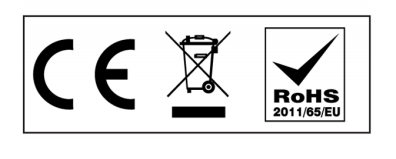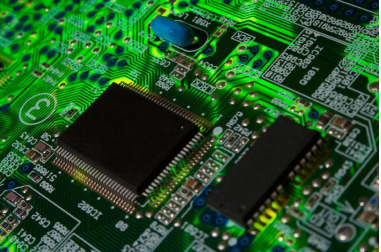RoHS stands for Restriction of Hazardous Substances
RoHS, also known as Directive 2002/95/EC, originated in the European Union on 2002 and restricts the use of six hazardous materials found in electrical and electronic products. All applicable products in the EU market since July 1, 2006 must pass RoHS compliance.
Directive 2011/65/EU was published in 2011 by the EU, which is known as RoHS-Recast or RoHS 2. RoHS 2 includes a CE-marking directive, with RoHS compliance now being required for CE marking of products. RoHS 2 also added Categories 8 and 9, and has additional compliance recordkeeping requirements.
Directive 2015/863 was published in 2015 by the EU, which is known as RoHS 3. RoHS 3 adds four additional restricted substances (phthalates) to the list of six.

Any business that sells applicable electrical or electronic products, equipment, subassemblies, cables, components, or spare parts directly to RoHS countries, or sells to resellers, distributors or integrators that in turn sell products to these countries, is impacted if they utilize any of the restricted 10 substances.
RoHS specifies maximum levels for the following 10 restricted substances. The first six applied to the original RoHS while the last four were added under RoHS 3.
Lead (Pb): < 1000 ppm
Mercury (Hg): < 100 ppm
Cadmium (Cd): < 100 ppm
Hexavalent Chromium: (Cr VI) < 1000 ppm
Polybrominated Biphenyls (PBB): < 1000 ppm
Polybrominated Diphenyl Ethers (PBDE): < 1000 ppm
Bis(2-Ethylhexyl) phthalate (DEHP): < 1000 ppm
Benzyl butyl phthalate (BBP): < 1000 ppm
Dibutyl phthalate (DBP): < 1000 ppm
Disobutyl phthalate (DIBP): < 1000 ppm

RoHS compliance are tested in the products using Portable RoHS analyzers, also known as X-ray fluorescence or XRF metal analyzers, are used for screening and verification of RoHS compliance.
Relationship between WEEE and RoHS
WEEE compliance aims to encourage the design of electronic products with environmentally-safe recycling and recovery in mind. RoHS compliance dovetails into WEEE by reducing the amount of hazardous chemicals used in electronics manufacture.
Put another way, RoHS regulates the hazardous substances used in electrical and electronic equipment, while WEEE regulates the disposal of this same equipment.
References
http://www.rohsguide.com/rohs-faq.htm
http://searchdatacenter.techtarget.com/definition/Restriction-of-Hazardous-Substances-Directive
Written by GANESH KRITHIVASAN










